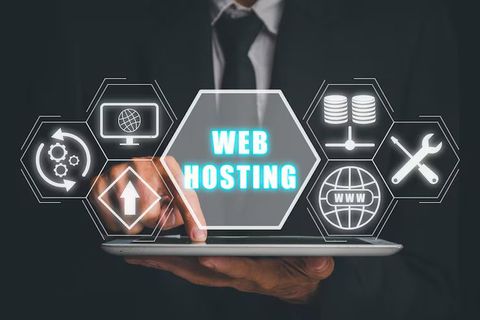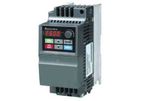
Explore the Impact of AI Processors on Future Computing
An AI processor is a specialized type of hardware component designed to efficiently handle the computationally intensive tasks required by artificial intelligence (AI) and machine learning (ML) models. Unlike a traditional Central Processing Unit (CPU), which is a general-purpose processor optimized for a wide range of tasks, an AI processor is built with a specific architecture that excels at the parallel processing of data—a fundamental requirement for training and running AI models.
The Growing Importance of AI Processors

The rise of AI processors is a pivotal development in modern computing, driven by the need for more capable and efficient technology in our devices and services. This technology is crucial today because it addresses some of the most pressing challenges in AI development and deployment.
Who It Affects
Developers and Researchers: AI processors offer a powerful new tool for creating and training sophisticated AI models, pushing the boundaries of what is possible in fields like computer vision, natural language processing, and robotics.
Businesses: Companies, from startups to large corporations, can leverage these processors to integrate AI into their products, improving everything from personalized recommendations on e-commerce sites to predictive maintenance in manufacturing.
Consumers: The benefits directly impact the user experience of modern technology. AI processors enable features like real-time language translation on a smartphone, on-device photo editing, and more accurate virtual assistants.
Government and Academia: These processors are essential for national initiatives in AI research and defense, enabling the development of advanced applications for public service and security.
Problems It Solves
Energy Consumption: Running complex AI models on general-purpose processors can consume a tremendous amount of power, which is a major concern for both mobile devices and large data centers. AI processors are designed with energy efficiency in mind, enabling AI capabilities on battery-powered devices and reducing the carbon footprint of data centers.
Latency and Connectivity: Many AI applications, such as real-time language translation or facial recognition, require instant results. Relying on cloud-based processing can introduce significant delays. By performing these tasks on the device itself, AI processors eliminate latency and remove the dependency on a constant, high-speed internet connection.
Data Privacy: Sending sensitive personal data—such as photos, voice commands, or health information—to a remote server for AI processing raises major privacy concerns. With AI processors, these tasks can be handled locally on the device, ensuring personal data remains secure and private.
Performance Bottlenecks: Traditional processors are not optimized for the parallel computations needed for AI. This can create a performance bottleneck, slowing down applications and limiting the complexity of AI models. AI processors are purpose-built to overcome this, providing a dramatic increase in speed and allowing for more powerful and complex AI experiences.
Recent Updates and Trends
The AI processor market is one of the most dynamic segments of the technology industry, with significant advancements and shifts occurring over the past year (late 2024 to mid-2025).
Mainstream Consumer Integration: The trend of integrating dedicated NPUs directly into consumer-grade processors has accelerated. Major chipmakers like Intel and AMD have launched new CPUs for laptops and desktops with powerful, built-in AI acceleration capabilities, marking a shift toward making on-device AI a standard feature.
Rise of the RaaS Model: As the cost of high-end AI processors for training large models remains a barrier, a trend toward a "Robotics-as-a-Service" (RaaS) model has emerged, where companies lease AI hardware and infrastructure. This lowers the entry barrier for smaller firms and startups, democratizing access to powerful AI compute resources.
Focus on Generative AI Hardware: The explosive growth of generative AI models has driven the demand for specialized hardware. Companies are now developing next-generation AI accelerators specifically designed to handle the unique demands of training and running these massive models, which require enormous amounts of memory and processing power.
Global AI Hubs: Countries are investing heavily in becoming global AI hubs. For instance, in early 2025, India inaugurated its first centers for advanced 3-nanometer chip design, a key step towards producing indigenous semiconductor chips. This effort, alongside large investments in AI and cloud infrastructure, highlights the global race to secure a leadership position in the AI hardware supply chain.
Laws and Policies
The global nature of AI processor development and manufacturing means that the industry is heavily influenced by international and national laws.
Export Controls and Trade Regulations: Governments, particularly in the United States, have implemented strict export controls on high-end AI chips to prevent their use in military applications by certain nations. This has created a complex regulatory environment, influencing which companies can sell what products to which countries. These policies are continuously evolving, with the goal of maintaining a strategic advantage in AI development.
Government Subsidies and Initiatives: In response to geopolitical competition and supply chain vulnerabilities, many governments are offering significant financial incentives to boost domestic AI hardware manufacturing and research. The "India Semiconductor Mission" and "India AI Mission," for example, provide substantial fiscal support and a call to action for the private sector to develop a robust AI ecosystem from design to manufacturing.
Data Privacy and Ethics: Laws such as Europe's General Data Protection Regulation (GDPR) and similar frameworks in other regions are a major driver for the adoption of AI processors. By encouraging on-device processing, these regulations reduce the need to transfer sensitive user data to the cloud, thus helping companies comply with data privacy laws and build consumer trust.
Tools and Resources
For those looking to explore the world of AI processors, a variety of tools and resources are available to help with development, research, and implementation.
Software Development Kits (SDKs): Major hardware manufacturers provide specialized SDKs that allow developers to program and optimize AI models for their specific processors. Examples include Intel OpenVINO, NVIDIA CUDA, and Qualcomm Neural Processing SDK.
Machine Learning Frameworks: Popular open-source frameworks like TensorFlow and PyTorch are continuously being updated with tools that allow them to interface with and take advantage of various AI processors, streamlining the development process.
Online Courses and Tutorials: Numerous online platforms offer courses on AI hardware acceleration. These resources are designed for everyone from beginners wanting to understand the basics to experienced developers looking to optimize their models for specific hardware.
Industry Reports and Analyst Websites: Research firms and technology analysts publish detailed reports on the AI hardware market, providing valuable insights into trends, market share, and future forecasts. Websites from organizations like Gartner and Forrester are great places to find this information.
Frequently Asked Questions
What is the difference between a CPU, a GPU, and an NPU?
A CPU (Central Processing Unit) is a general-purpose processor that performs a wide variety of tasks sequentially. A GPU (Graphics Processing Unit) is optimized for parallel processing, making it effective for graphics rendering and, more recently, AI training. An NPU (Neural Processing Unit) is a specialized AI processor specifically designed to handle the matrix and tensor calculations that are at the core of AI models with high efficiency and low power consumption.
Do I need a computer with an AI processor for everyday use?
For most everyday tasks like browsing the web or writing documents, a traditional CPU is sufficient. However, for applications that use AI—such as advanced photo editing, video conferencing with background blur, or real-time language translation—an integrated NPU can significantly improve performance and efficiency.
How do AI processors affect my smartphone?
In a smartphone, AI processors enable key features that are now considered standard, like real-time photo processing for better images, facial recognition for security, predictive text for faster typing, and on-device voice commands for virtual assistants, all while extending battery life.
Is AI hardware only used for training AI models?
No. While powerful GPUs and dedicated AI accelerators are used for the training of large AI models in data centers, smaller, more energy-efficient AI processors (like NPUs) are primarily used for inference—the process of running a pre-trained model to make a prediction or complete a task.
Conclusion
The rise of AI processors represents a fundamental shift in the landscape of modern computing. No longer an esoteric field limited to research labs, AI has moved to the core of our devices, from smartphones and laptops to data centers and vehicles. This transition, fueled by the demand for speed, efficiency, and privacy, has made specialized AI hardware an essential component of the technological ecosystem. As AI models become more complex and integrated into our daily lives, the innovation in this field will continue to drive new possibilities, promising a future where intelligent applications are faster, more accessible, and more efficient than ever before










